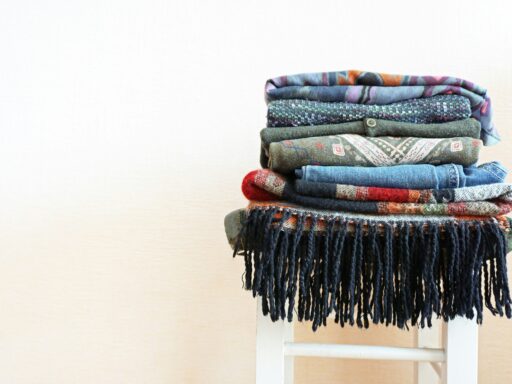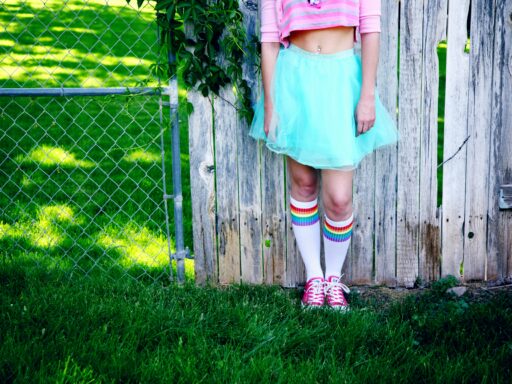Feature Photo by Alyssa Strohmann on Unsplash
In the ever-changing world of fashion, a single movement is gaining momentum: sustainable clothing.
With growing concern over environmental issues and ethical labor, more and more people are increasingly turning their attention to the concept of sustainable fashion.
But what exactly does it mean, and why is it so important?
Let’s discover more about sustainable clothing, why it is so important, responsible sourcing, and the material to choose.
The Importance of Sustainable Clothing
Sustainable clothing is more than choosing eco-friendly fabric. It also refers to garments that are made without disrespecting the rights of workers and promote long-term social and economic well-being.
The practice of sustainable fashion is important because:
1. Reduce Waste and Pollution
The practice of sustainability in the fashion industry is desperately needed to reduce the amount of pollution it has produced over the years.
Not to mention the number of fashion wastes has increased drastically over the past year. Population growth along with consumerism behavior play a huge factor in this matter.
Sustainable fashion aims to reduce waste by creating high-quality apparel that will last for a long time. This movement also focuses more on using reusable materials, which will dramatically reduce waste.
2. Lessen Carbon Footprint
Some people may not be aware that this industry coughs up a large volume of greenhouse gases that play a part in creating global warming.
The production and synthetic materials used by clothing manufacturers require much energy and natural sources, which produce more pollution in the air and water.
Sustainable fashion prefers specific material that comes naturally and are easy to recycle, which makes the production go faster and requires less energy. In the end, there will be less carbon footprint and its negative effects.
- Support Fair Salary and Healthy Working Environment
https://unsplash.com/photos/red-and-white-dining-tables-and-chairs-cfDURuQKABk
The global garment industry is filled with labor issues such as exploitative labor practices, unsafe working places, and unfair salaries.
The workers didn’t get fair wages, even though they worked for hours in a poor working area. The constant pressure to create new clothing and new fashion products all the time results in labor exploitation, including child labor, just for the sake of meeting production demand.
Sustainable fashion works hard to avoid all those issues. The priority here is to create a safe working environment with a fair salary and only use sustainable materials to produce sustainable clothes.
Sustainable Sourcing and Production
Sustainable fashion also pays attention to sourcing and production. It tries to ensure that the fabric, component, and production process are abiding by the rules and metrics of sustainability.
Any brand or company that wishes to source the material, products, and other fashion items should pay attention to these metrics:
- The ability to trace the journey of garment production from sourcing the raw material to the manufacturing and distribution process.
- Employees well-being
- Commercial practice: where and how it was sold
- Sources for the raw material used in manufacturing
- Environmental consideration
Sustainable Fabric Exploration
What are the fabrics that are considered sustainable? Does it always mean natural fabric, or are there other options besides plant-based fabric? Let’s explore more of it.
- Natural Fabrics
https://unsplash.com/photos/field-of-cotton-trees-pyud8ZaVq4I
It refers to material provided by Mother Nature. There are many options for natural fabrics, such as:
- Recycled cotton, proved to be a better alternative to conventional one, which grows with tons of pesticides, and organic one, which grows naturally without chemicals but has become harder to find.
- Organic hemp, which can be found worldwide in abundance, is easy to grow, and needs little water, while also actually helps fertilizing the land where it grows.
- Organic linen from the flax plant has lots of good qualities such as being resistant to moths, absorbing moisture, lightweight, and biodegradable.
- Lyocell, made from the cellulose of wood pulp, makes it compostable and biodegradable.
- Wool, harvested from the sheep and was well known as quality material.
2. Sustainable Clothing with Fabric Innovation
Scientists have developed many innovations when it comes to sustainable fabrics. Some of them are:
- Bananatex introduced to the world in 2018 with banana plants as the main material
- Econyl, where the synthetic waste is recycled into the fabric for clothing.
- Circulose comes from fashion waste recycled into usable material
- Specific fabric is made by coating a fiber in the protein found in squid rings to create quality fabrics that are supposed to last longer while at the same time being biodegradable and recyclable.
Conclusion
The movement toward a more ethical and sustainable fashion industry is crucial. Everyone plays a part in this movement, especially us, the consumers.
By embracing sustainability in fashion, we get to protect the planet and its resources. At the same time, we also support the rights of workers who work hard to produce the clothes we wear. Sustainable fashion will be part of our legacy for the next generation, and that is something everyone should fight for.







